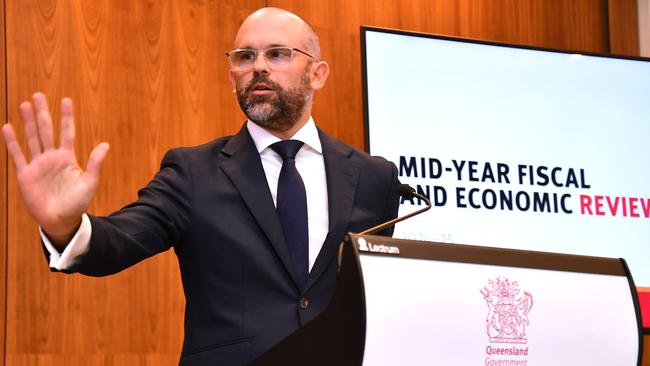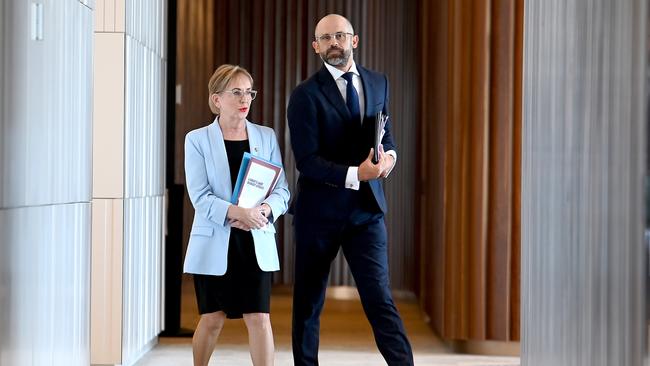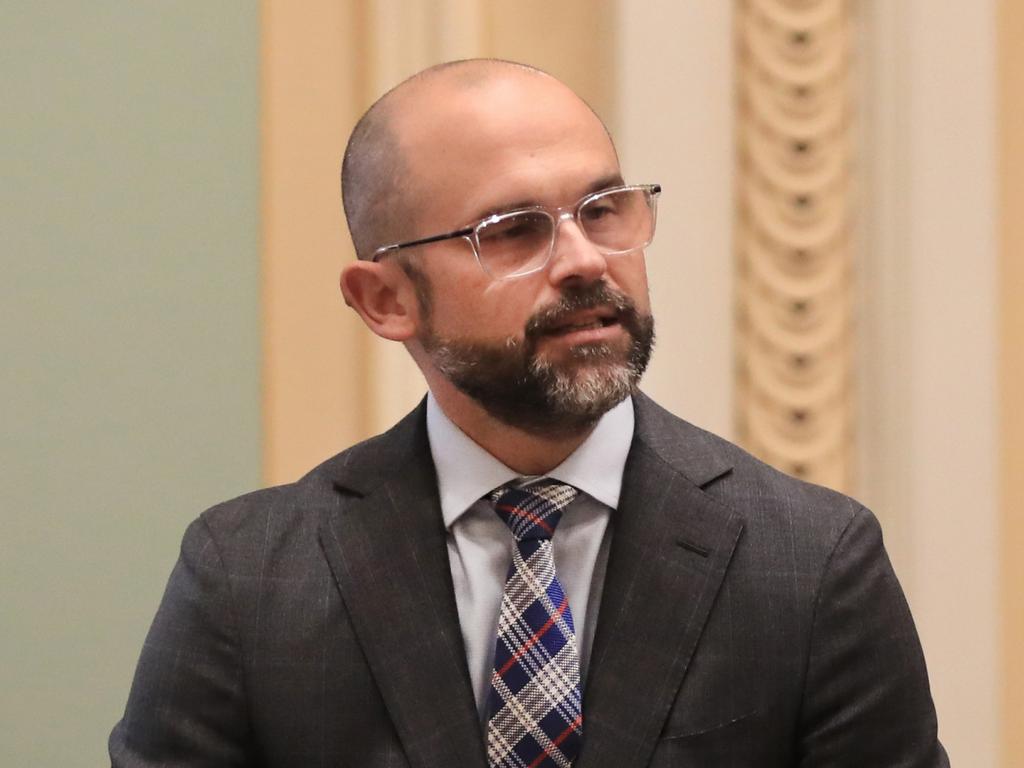Queensland credit rating downgrade is ‘highly likely’: Treasurer
Queensland’s new Treasurer David Janetzki has warned the state will likely suffer a credit rating downgrade as a wave of red ink inundates the budget bottom line.

New Queensland Treasurer David Janetzki is refusing to rein in the escalating public sector spending agenda inherited from the former Labor government, despite warning it was now “highly likely” the state would suffer a credit rating downgrade.
As a tidal wave of red ink inundates the state budget’s bottom line, with record-breaking deficits and soaring government debt, Mr Janetzki said the new Liberal National Party government would not axe any of Labor’s programs or trim the ballooning public service.
Accusing the former Miles government of painting a “deceitful” picture of Queensland’s finances before the October state election, Mr Janetzki revealed total government debt is now projected to surge to $217.83bn by mid-2028, up $45.84bn on what Labor predicted in its final June budget.
“Knowing what we know, with debt per capita tracking to be the worst in the country, it is highly likely that we will not just have an outlook downgrade, but that it’s highly likely we will have a rating downgrade,” he said.
“I think the treasurer of this state should take our credit rating seriously, because ultimately it determines the creditworthiness of our state and the cost at which we borrow money.
“My message to Queensland is that we are serious.”
S&P Global Ratings in September confirmed Queensland’s AA+ rating on the expectation that debt levels would peak at about 140 per cent of operating revenues and that the budget would remain in cash surplus.

Thursday’s budget update predicted a debt-to-revenue ratio of 129.2 per cent this financial year, growing to 155 per cent in 2025-26.
It also forecasts consecutive deficits of $6.9bn in 2025-26, and $9.2bn in both 2026-27 and 2027-28.
In a report, released ahead of Queensland’s budget update on Thursday, S&P found that every rated Australian state reported a larger cash deficit in 2023-24 than in the year prior, as spending on public services, interest expenses, election sweeteners, and infrastructure investment rose.
The agency last year revised rating outlooks to negative for New South Wales, Tasmania and the ACT.
“Tight election races in some states have seen ministers of all political complexions – perhaps wary of the global wave of anti-incumbent sentiment – put budget discipline on the backburner,” S&P analyst Martin Foo said.
“We believe the quality of financial management is fading. Most states pledge to stabilise debt, but only at some vague point in the future.”
In his budget update, Mr Janetzki foreshadowed the Crisafulli government would make efforts to stabilise debt and spending over its first four-year term, but would not say how.
He said returning to surplus would be a “serious challenge”, and ruled out cuts to the public service, asset sales or increased taxes.
“We are committed to delivering the services that Queensland needs, and we need more nurses and teachers and police officers and firefighters,” Mr Janetzki said.
“We need more of those frontline services, because Queensland deserves more and better services.”
On coming to office in October, the LNP immediately axed Labor’s proposed $36.8bn Pioneer-Burdekin pumped hydro project, the cost of which sat outside forward estimates. It has also paused union-backed Best Practice Industry Conditions on large infrastructure projects, which Mr Janetzki claimed would save $17bn over five years.
Royalty revenue, including from coal and petroleum sales, is expected to tip $7.98bn into government coffers this financial year, down $422m than what was predicted in the June budget.
The forecast public sector wages bill for the next four years has already blown out by $8.6bn since June, and is expected to grow further as the state negotiates new three-year pay deals with the public service.
Ousted Labor treasurer Cameron Dick, now deputy opposition leader, accused Mr Janetzki of “cooking the books to create the worst possible set of numbers to soften up Queensland for what comes next”.
“And that includes cuts, particularly cuts to infrastructure and re-scoping and de-scoping infrastructure projects across Queensland.”
Mr Dick said he had no regrets about racking up mass debt and spending, saying the former government had delivered cost-of-living relief.
“It’s about time the LNP stopped whingeing and started working, stopped blaming and started building for our state.”






To join the conversation, please log in. Don't have an account? Register
Join the conversation, you are commenting as Logout